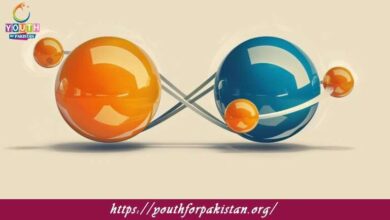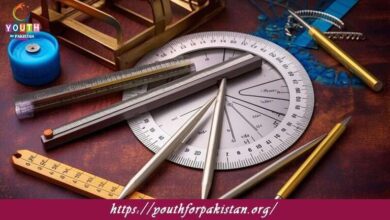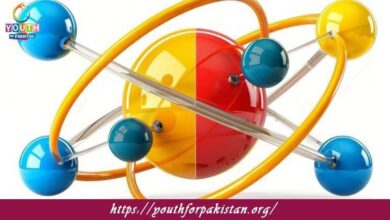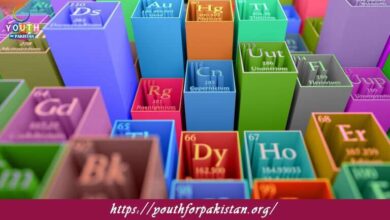9th Class Biology Chapter 1 MCQs with Answers
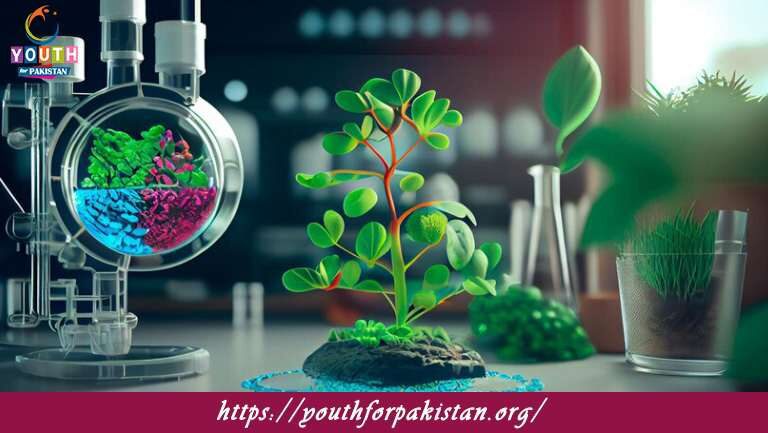
Welcome to the wonderland of biology through our “Introduction to Biology MCQs” for 9th-class students. It would include a bird’s view concerning concepts of the scope, branches, and importance of biological sciences concerning the everyday life of humans. Whet your understanding with a set of well-framed multiple-choice questions testing your knowledge about basic principles and definitions. This is ideal for the preparation of exams and quick revision.
Which of the following is considered the basic unit of life?
a) Cell
b) Tissue
c) Organ
d) Organism
What is the process by which plants convert sunlight into energy?
a) Respiration
b) Photosynthesis
c) Digestion
d) Fermentation
Which organelle is known as the “powerhouse” of the cell?
a) Nucleus
b) Mitochondria
c) Endoplasmic reticulum
d) Golgi apparatus
The genetic material in a cell is contained within the:
a) Nucleus
b) Mitochondria
c) Chloroplast
d) Ribosome
What is the process by which cells divide and multiply to form new cells?
a) Meiosis
b) Mitosis
c) Fertilization
d) Reproduction
Which biomolecule is the main source of energy for living organisms?
a) Protein
b) Lipid
c) Carbohydrate
d) Nucleic acid
Which scientist is credited with the discovery of the laws of inheritance, now known as
Mendel’s Laws?
a) Charles Darwin
b) Gregor Mendel
c) Louis Pasteur
d) Alexander Fleming
What is the process by which water is lost from the surface of a plant, primarily through small openings on the leaves?
a) Respiration
b) Transpiration
c) Osmosis
d) Photosynthesis
Which of the following is not an example of an abiotic factor in an ecosystem?
a) Temperature
b) Water availability
c) Predators
d) Soil pH
The chemical equation for photosynthesis is:
a) CO2 + H2O -> C6H12O6 + O2
b) C6H12O6 + O2 -> CO2 + H2O
c) O2 + H2O -> CO2 + C6H12O6
d) CO2 + O2 -> H2O + C6H12O6
Which type of tissue connects muscles to bones in the human body?
a) Epithelial tissue
b) Nervous tissue
c) Connective tissue
d) Muscle tissue
The process of breaking down food into smaller molecules that can be absorbed by the body is known as:
a) Respiration
b) Excretion
c) Digestion
d) Circulation
Which of the following is the primary pigment responsible for capturing light energy in plants?
a) Chlorophyll
b) Carotene
c) Melanin
d) Hemoglobin
Which organelle is responsible for protein synthesis in the cell?
a) Nucleus
b) Mitochondria
c) Endoplasmic reticulum
d) Ribosome
What is the largest organ in the human body?
a) Heart
b) Liver
c) Skin
d) Brain
The process by which water moves across a semipermeable membrane from an area of lower solute concentration to an area of higher solute concentration is called:
a) Osmosis
b) Diffusion
c) Active transport
d) Passive transport
The region where two or more bones are joined together is called a:
a) Ligament
b) Tendon
c) Joint
d) Cartilage
Which gas is essential for aerobic respiration in living organisms?
a) Carbon dioxide (CO2)
b) Nitrogen (N2)
c) Oxygen (O2)
d) Hydrogen (H2)
Which of the following is the process by which an organism maintains a stable internal environment despite external fluctuations?
a) Reproduction
b) Adaptation
c) Homeostasis
d) Evolution
The process by which an organism changes over time to better suit its environment is known as:
a) Homeostasis
b) Reproduction
c) Evolution
d) Metabolism
Which of the following is a nitrogenous base found in DNA?
a) Adenine
b) Guanine
c) Thymine
d) All of the above
Which part of the plant is responsible for absorbing water and nutrients from the soil?
a) Roots
b) Leaves
c) Stem
d) Flowers
In which organelle does cellular respiration occur?
a) Nucleus
b) Mitochondria
c) Chloroplast
d) Ribosome
The process by which certain plants and bacteria convert nitrogen gas from the atmosphere into usable forms for living organisms is known as:
a) Photosynthesis
b) Transpiration
c) Nitrogen fixation
d) Nitrogen cycling
Which of the following is an example of an autotroph?
a) Lion
b) Deer
c) Oak tree
d) Snake
Which component of the blood is responsible for carrying oxygen to body tissues?
a) White blood cells
b) Platelets
c) Red blood cells
d) Plasma
Which of the following is a characteristic of eukaryotic cells?
a) They lack a true nucleus.
b) They are smaller than prokaryotic cells.
c) They contain membrane-bound organelles.
d) They are found only in bacteria.
The process of DNA duplication before cell division is known as:
a) Translation
b) Transcription
c) Replication
d) Translocation
What is the main function of the ribosome in a cell?
a) Synthesizing proteins
b) Producing energy
c) Storing genetic material
d) Regulating cell size
Which of the following is a sex-linked genetic disorder that primarily affects males?
a) Down syndrome
b) Hemophilia
c) Cystic fibrosis
d) Tay-Sachs disease
Which of the following is responsible for carrying genetic information from the nucleus to the ribosomes?
a) Messenger RNA (mRNA)
b) Transfer RNA (tRNA)
c) Ribosomal RNA (rRNA)
d) Double-stranded RNA (dsRNA)
The human body has a total of how many chromosomes?
a) 23
b) 46
c) 64
d) 92
The process by which an organism develops from a fertilized egg into a fully-formed individual is called:
a) Growth
b) Development
c) Reproduction
d) Differentiation
Which of the following is an example of an exocrine gland in the human body?
a) Salivary gland
b) Pituitary gland
c) Adrenal gland
d) Thyroid gland
Which of the following is a vector-borne disease transmitted through the bite of infected mosquitoes?
a) Malaria
b) Tuberculosis
c) Influenza
d) Cholera
Which type of RNA is involved in protein synthesis and carries amino acids to the ribosomes?
a) Messenger RNA (mRNA)
b) Transfer RNA (tRNA)
c) Ribosomal RNA (rRNA)
d) Double-stranded RNA (dsRNA)
Which of the following is a green pigment found in plants that is involved in photosynthesis?
a) Hemoglobin
b) Melanin
c) Chlorophyll
d) Bilirubin
The process by which an organism produces offspring similar to itself is called:
a) Metabolism
b) Reproduction
c) Homeostasis
d) Adaptation
The first scientist to observe living microorganisms under a microscope was:
a) Robert Hooke
b) Anton van Leeuwenhoek
c) Louis Pasteur
d) Gregor Mendel
Which of the following is the primary function of the circulatory system?
a) Exchange of gases
b) Digestion of food
c) Production of hormones
d) Transportation of nutrients and oxygen
The basic building blocks of proteins are called:
a) Monosaccharides
b) Amino acids
c) Nucleotides
d) Fatty acids
What is the primary function of the stomata in plant leaves?
a) Photosynthesis
b) Transpiration
c) Reproduction
d) Gas exchange
The condition in which an organism has two different alleles for a particular trait is called:
a) Homozygous
b) Heterozygous
c) Dominant
d) Recessive
Which of the following is the smallest unit of an element that retains its chemical properties?
a) Molecule
b) Cell
c) Atom
d) Proton
Which of the following is an example of a vestigial structure in humans?
a) Appendix
b) Heart
c) Brain
d) Lungs
The process by which plants and animals release stored energy from food molecules is called:
a) Photosynthesis
b) Respiration
c) Digestion
d) Fermentation
Which of the following is the outermost layer of the skin that provides protection?
a) Dermis
b) Epidermis
c) Hypodermis
d) Mesoderm
In which part of the digestive system does the majority of nutrient absorption occur?
a) Stomach
b) Small intestine
c) Large intestine
d) Esophagus
Which of the following is an example of an anthropoid primate?
a) Gorilla
b) Lemur
c) Rhesus monkey
d) Tasmanian devil
The process of maintaining a constant body temperature despite changes in the external environment is called:
a) Adaptation
b) Homeostasis
c) Evolution
d) Metabolism
Which of the following is responsible for carrying out protein synthesis in the cell?
a) Endoplasmic reticulum
b) Mitochondria
c) Golgi apparatus
d) Ribosome
The genetic information in DNA is stored in the sequence of its:
a) Nucleotides
b) Proteins
c) Carbohydrates
d) Lipids
The process by which water moves from a region of higher water concentration to a region of lower water concentration through a semipermeable membrane is called:
a) Diffusion
b) Osmosis
c) Active transport
d) Filtration
Which of the following is a common method used in biotechnology to create multiple copies of a specific DNA segment?
a) Cloning
b) Photosynthesis
c) Polymerase chain reaction (PCR)
d) Respiration
Which part of the nervous system is responsible for the fight-or-flight response during stressful situations?
a) Sympathetic nervous system
b) Parasympathetic nervous system
c) Central nervous system
d) Peripheral nervous system
Which of the following is the main function of the Golgi apparatus in a cell?
a) Protein synthesis
b) Lipid storage
c) Transportation of materials
d) DNA replication
The theory of evolution was proposed by:
a) Charles Darwin
b) Gregor Mendel
c) Louis Pasteur
d) Albert Einstein
The process by which water vapor is released from plants into the atmosphere is called:
a) Transpiration
b) Respiration
c) Photosynthesis
d) Evaporation
Which of the following is a genetic disorder caused by the presence of an extra chromosome 21?
a) Down syndrome
b) Hemophilia
c) Cystic fibrosis
d) Tay-Sachs disease
The process by which individuals with certain beneficial traits are more likely to survive and reproduce is known as:
a) Adaptation
b) Natural selection
c) Homeostasis
d) Evolution
If you are interested to enhance your knowledge regarding Physics, Chemistry, Biology, and Computer please click on the link of each category, you will be redirected to dedicated website for each category.


